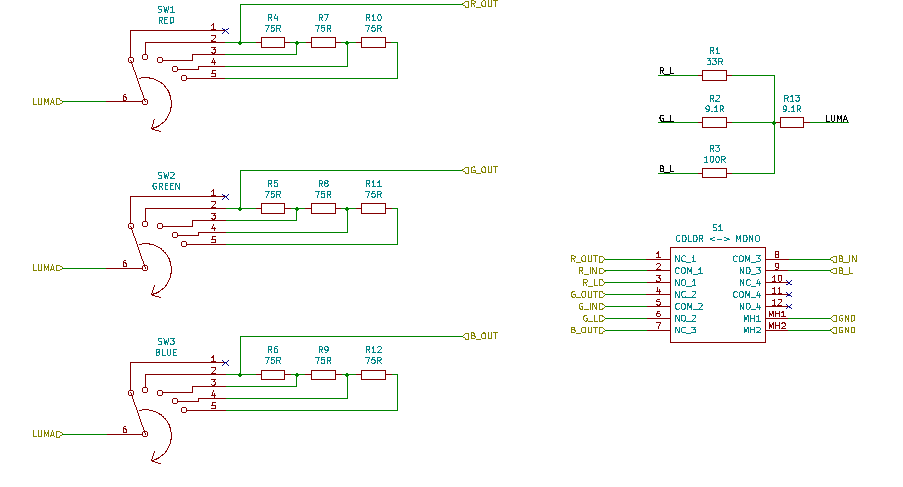MonochromeRGB
Posted: Mon Dec 21, 2020 11:54 am
Hi,
I have developed a device that will allow us to enjoy the MiSTer playing with its RGB output to make interesting combinations of monochrome screens, regardless of the core used, in addition to the common ones of old Green, Amber and B&W monitors:

It is Open Hardware although I will have units available in my Tindie shop, fully assembled and with 3D case, ready to go. It has three modes of operation:
All the technical details and access to my GitHub repository with the sources are in the following project of my Hackaday account.
Below you can see a great presentation video carried out by Invertigo, YouTube allows you to activate subtitles and translate them into English without problems, which is more than acceptable:
The magnificent design of the 3D case is the work of Agustín Gallego, who, as with MonochromeVGA, I must congratulate him on this great work.
The device is fully assembled and optional 3D case of the following measures is included: 14,1 x 7,9 x 3,5 cms.
Although not mentioned in the video, with some RGB combinations in color mode it is also possible to make interesting palette changes in certain games and retro systems:

I hope you like it.
I have developed a device that will allow us to enjoy the MiSTer playing with its RGB output to make interesting combinations of monochrome screens, regardless of the core used, in addition to the common ones of old Green, Amber and B&W monitors:
It is Open Hardware although I will have units available in my Tindie shop, fully assembled and with 3D case, ready to go. It has three modes of operation:
- VGA to VGA passively, without the need for any power supply.
- SCART to SCART, also without the need for any power supply.
- VGA at 15.7Khz horizontal frequency to SCART with automatic 4:3 <-> 16:9 aspect change for compatible TVs, being necessary 5V power supply via microUSB or from the VGA connector itself. This is possible thanks to the implementation of another project on which it is based, called The ultimate VGA to SCART adapter.
All the technical details and access to my GitHub repository with the sources are in the following project of my Hackaday account.
Below you can see a great presentation video carried out by Invertigo, YouTube allows you to activate subtitles and translate them into English without problems, which is more than acceptable:
The magnificent design of the 3D case is the work of Agustín Gallego, who, as with MonochromeVGA, I must congratulate him on this great work.
The device is fully assembled and optional 3D case of the following measures is included: 14,1 x 7,9 x 3,5 cms.
Although not mentioned in the video, with some RGB combinations in color mode it is also possible to make interesting palette changes in certain games and retro systems:
I hope you like it.
